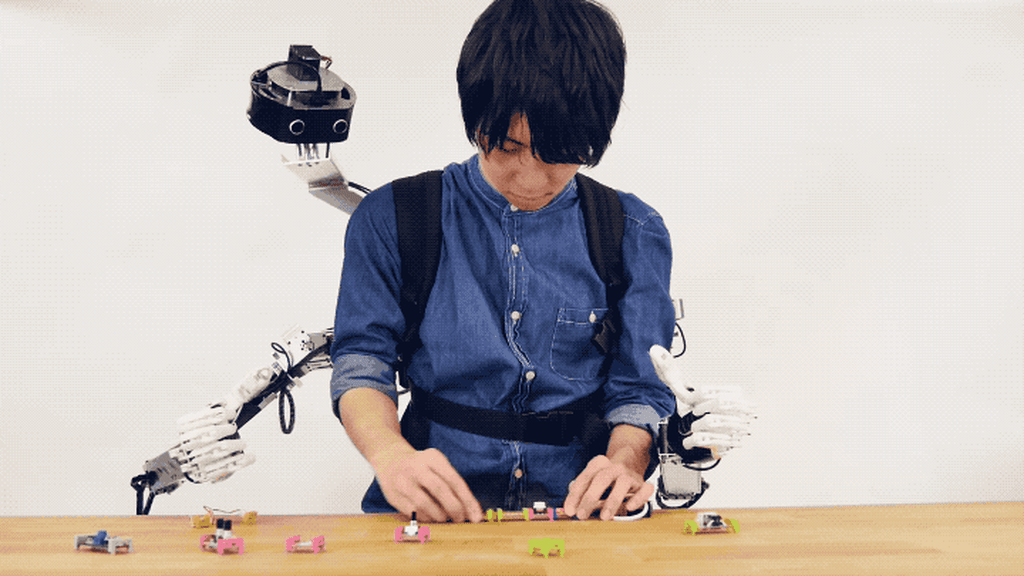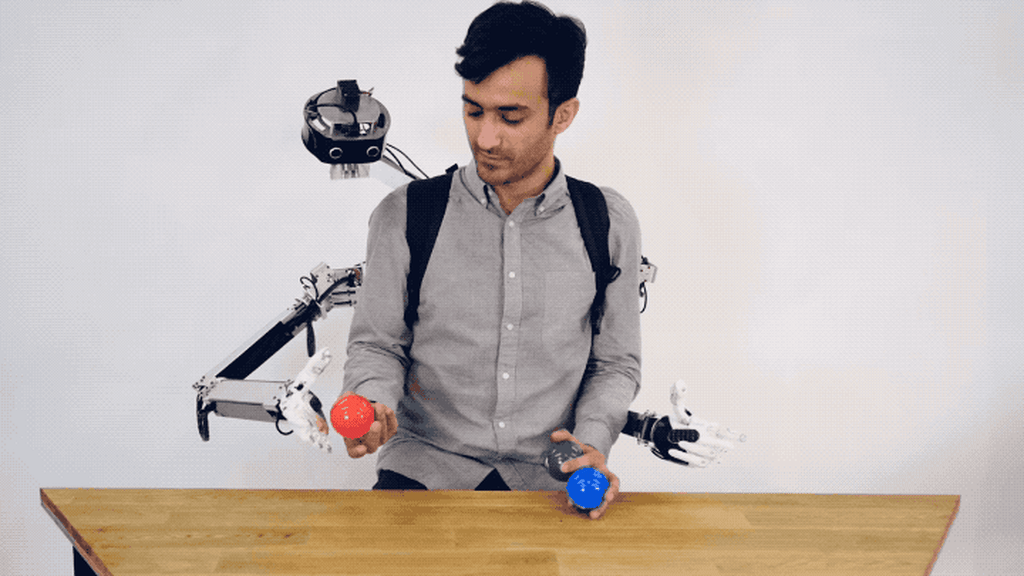When you imagine the future, it’s easy to fall into the trap of Bauhaus 2050–a place where screens simply appear and disappear when needed, and technology is minimal, tasteful, and ethereal. Here’s another possible future: We’re all casual cyborgs that wear dexterous, double-limbed robots around our shoulders to help out when we need them. Just try to claim with a straight face that you wouldn’t want one.
A very real prototype of such a device comes our way from a team at Keio University, led by assistant professor Yamen Saraiji, in conjunction with the University of Tokyo.
[Image: courtesy Keio University Graduate School of Media Design/The University of Tokyo]Their backpack is the successor of MetaLimbs, a prototype I covered here in Fast Company last year, which gave the wearer a third arm that they controlled by foot pedals. The MetaLimbs project has gotten a significant upgrade, dubbed Fusion. Aside from adding a second arm, the system now features telepresence, which allows another person, even half a world away, to control those robotic arms with a first-person view of their wearer. That means another person can don an Oculus Rift headset and take control of the robotic limbs in virtual reality, helping the wearer complete tasks thanks to a camera near their head. In essence, MetaLimbs allows two people to share the same body.
It’s easy to imagine the possibilities. With a remotely connected expert, anyone wearing Fusion could have immediate expertise in just about anything. Imagine strapping on a Fusion to perform emergency surgery or fix your car’s air filter. While your fleshy arms hang there, your robotic appendages could save the day.
But Fusion’s greater promise is evident in something its “remote puppetting” mode. In this mode, the two Fusion arms are attached to the human’s arms, so the remote expert can actually choreograph someone’s movements to teach them a particular skill. It’s like being possessed, voluntarily, by a ghost teaching you some skill. For instance, researchers demonstrated how a remote musician could give a Fusion wearer the ability to play marimba. One day, Fusion could teach your body the most perfect golf stroke or CPR compression technique–or, as MIT Technology Review points out, help you rehabilitate your body after an injury.
Fusion’s creators now want to bring the product to market, and while it’s hard to imagine all of us walking around with robotic torsos on our backs, this is just the sort of tool that could probably find a solid foothold (or, ahem, armhold) in very specific healthcare or enterprise markets.
Recognize your brand’s excellence by applying to this year’s Brands That Matter Awards before the early-rate deadline, May 3.








